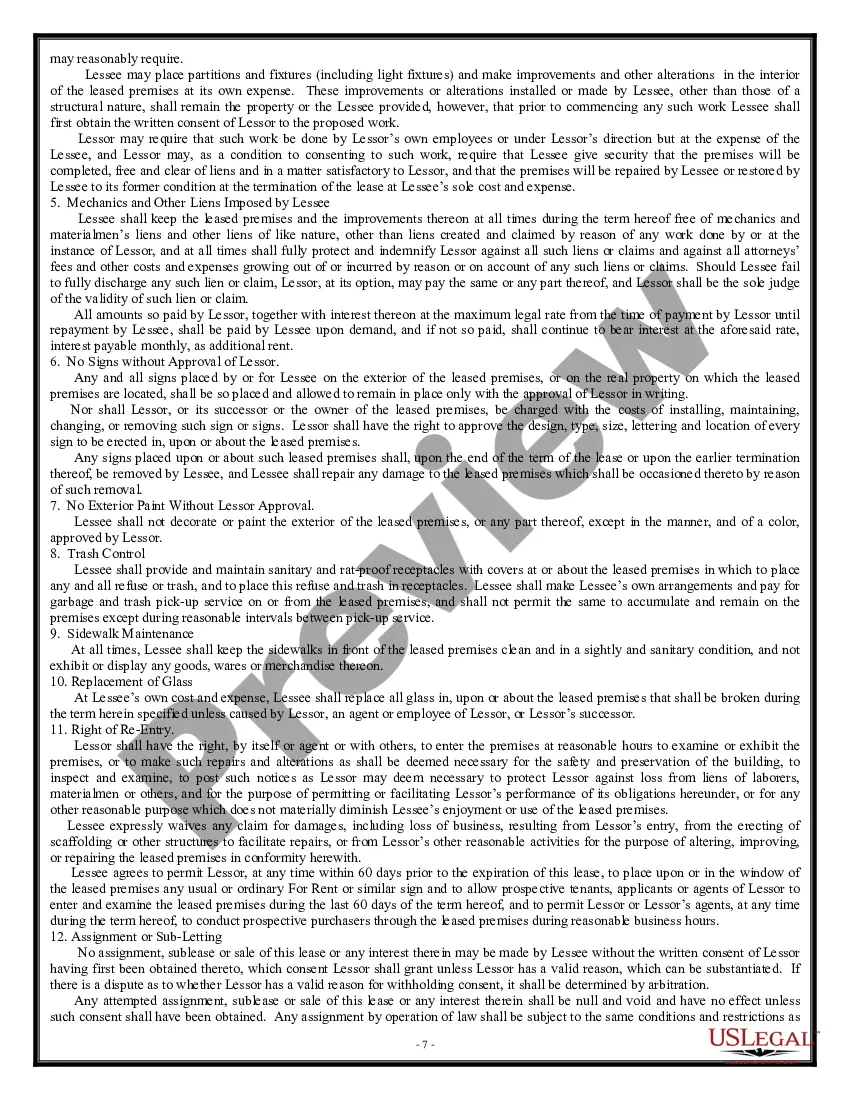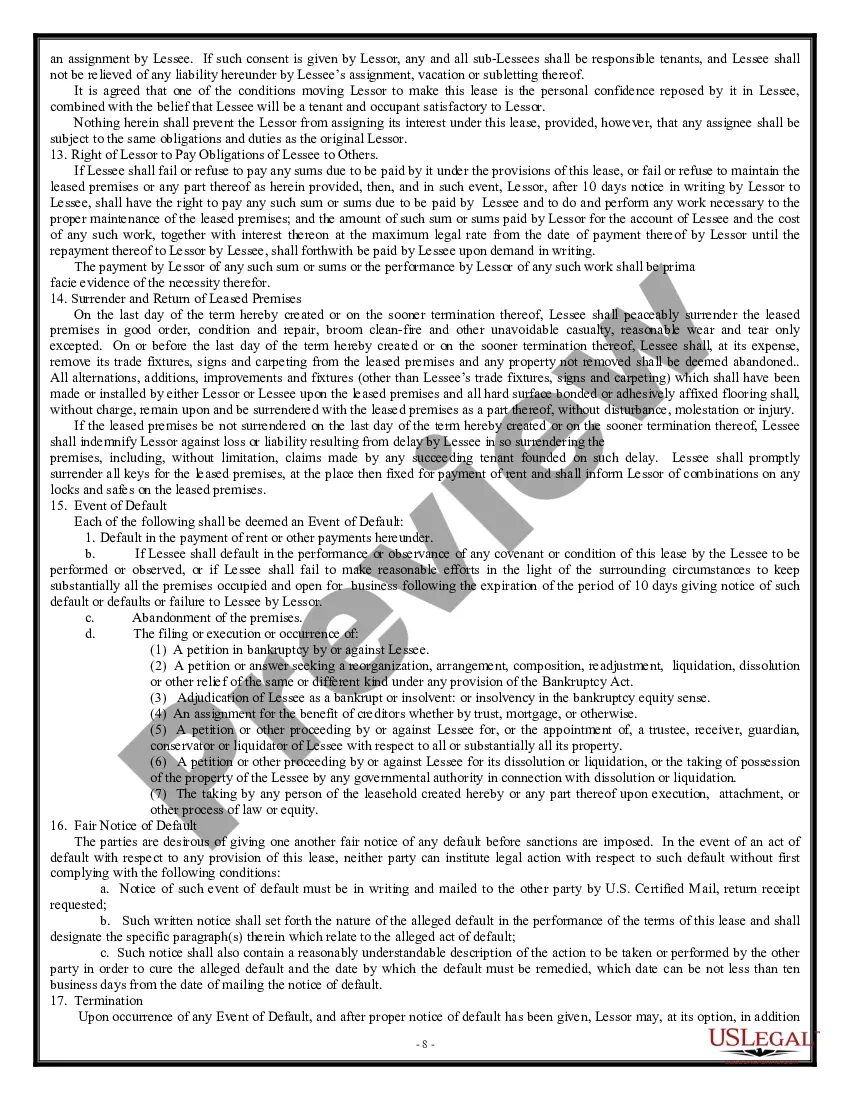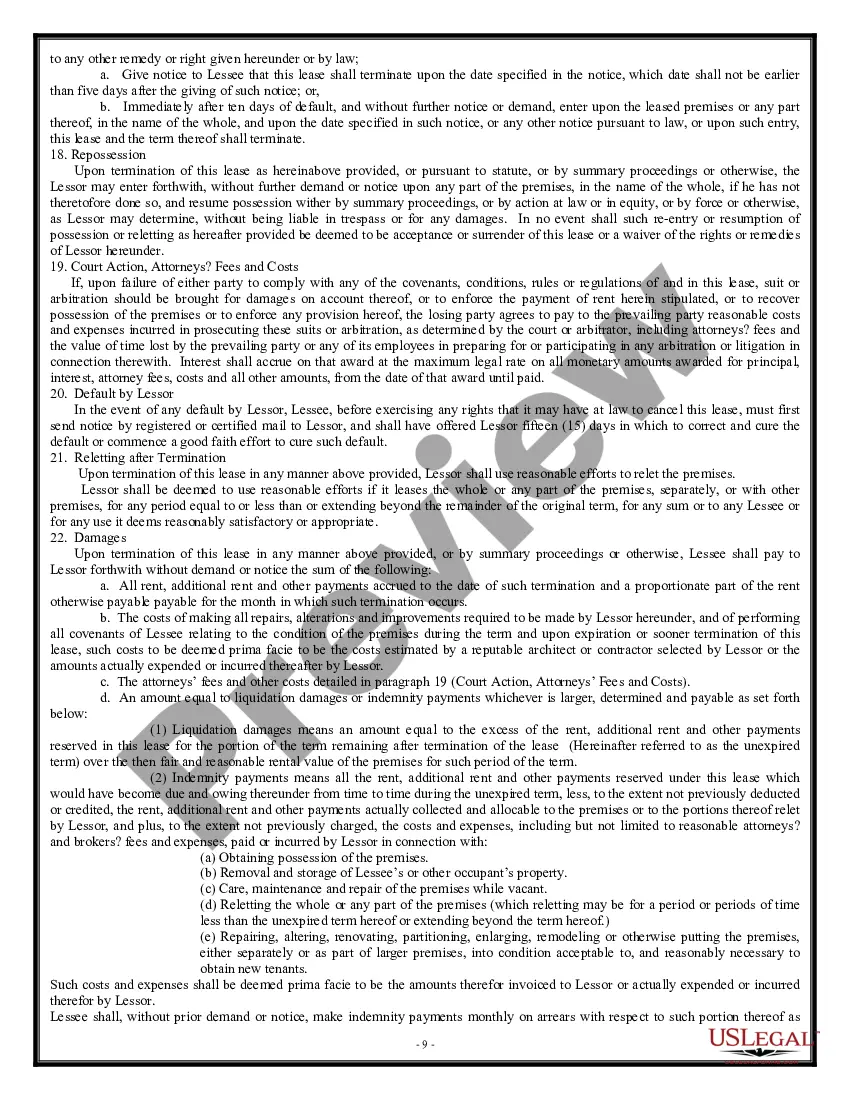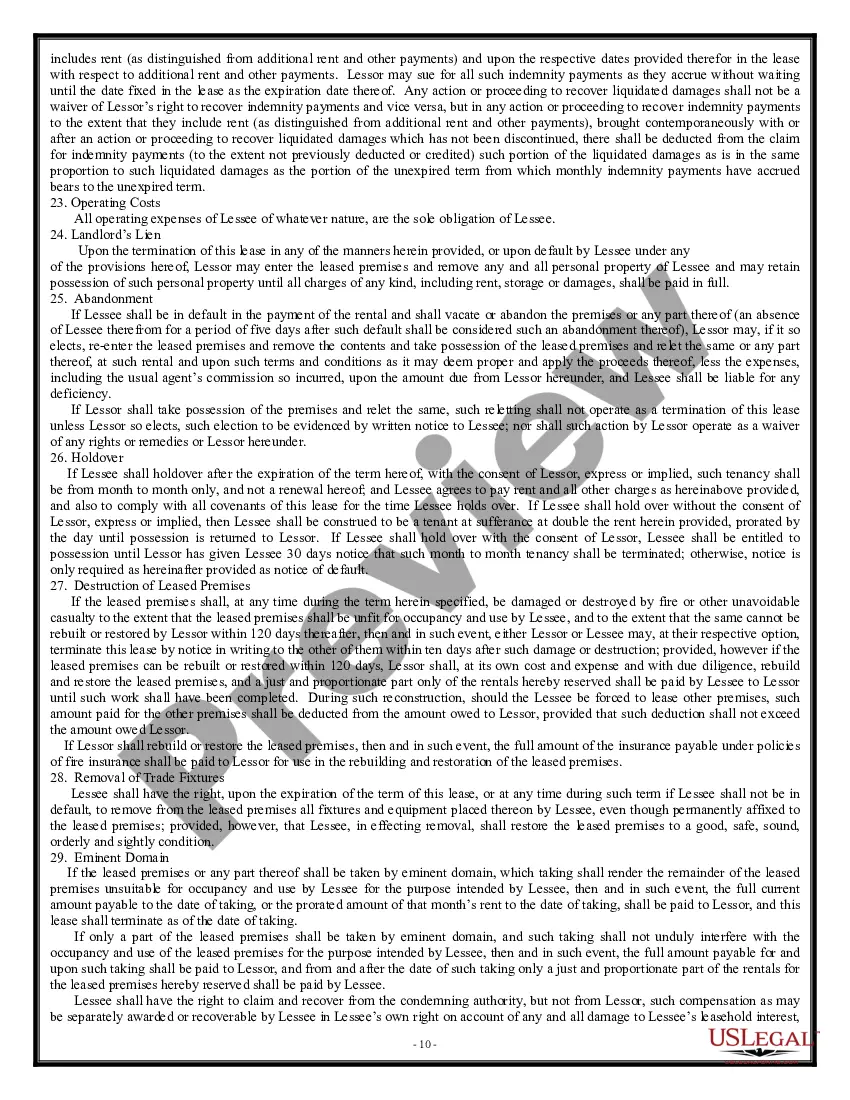Alaska Space, Net, Net, Net — Triple Net Lease: A Comprehensive Overview of Triple Net Leases in Alaska In the commercial real estate industry, the concept of a triple net lease has gained significant popularity, offering numerous benefits to both landlords and tenants. This detailed description aims to explore the essence of Alaska Space, Net, Net, Net — Triple Net Lease, emphasizing its significance and types in the Alaskan market. Definition and Key Features: A triple net lease, commonly referred to as a NNN lease or net lease, represents a lease structure wherein the tenant is responsible for bearing the costs of three primary expenses — property taxes, insurance, and maintenance. Essentially, the tenant agrees to not only pay the base rent but also take up responsibilities for these additional costs, leaving the landlord with minimal financial obligations. Significance and Benefits: Triple Net Leases provide advantages for both parties involved. For landlords, this lease structure ensures a steady rental income and minimal operating expenses, as the tenants assume these burdens. Simultaneously, tenants benefit from the autonomy to control the property, customize it to their requirements, and better forecast their total operating costs. This type of lease structure is particularly attractive to businesses seeking a long-term lease arrangement with relatively less uncertainty regarding expenses. Types of Alaska Space, Net, Net, Net — Triple Net Lease: 1. Single Tenant Triple Net Lease: As the name suggests, this type of lease involves a single tenant occupying the entire property, typically for a more extended period. The tenant bears all responsibilities associated with property taxes, insurance, and maintenance costs. 2. Multi-Tenant Triple Net Lease: In contrast, a multi-tenant triple net lease involves multiple tenants sharing the same property, with each tenant taking responsibility for their respective portion of property taxes, insurance, and maintenance expenses. This type of lease is often seen in retail plazas or office buildings with multiple units. 3. Ground Triple Net (NNN) Lease: Ground leases are an extension of the triple net lease concept, primarily focused on land. In this arrangement, the tenant leases the land and typically constructs their building or makes improvements on the leased land while assuming all related property expenses. Key Considerations for Alaska Space, Net, Net, Net — Triple Net Lease: 1. Creditworthiness: Before entering into a triple net lease agreement, landlords should assess the tenant's financial stability and creditworthiness to ensure they can fulfill their responsibilities effectively. 2. Lease Structure and Terms: Landlords and tenants must carefully negotiate and outline terms related to lease duration, rent escalation, maintenance responsibilities, and insurance requirements to align both parties' interests. 3. Legal Counsel and Documentation: Given the complexity of the lease structure, seeking legal advice and proper documentation is crucial to protect the rights and obligations of both landlords and tenants. In summary, the Alaska Space, Net, Net, Net — Triple Net Lease represents a lease structure wherein tenants assume additional property expenses, including taxes, insurance, and maintenance costs. This arrangement provides numerous benefits to landlords and tenants alike, ensuring stability, cost predictability, and increased control over the property's operations. By understanding the key features, types, and considerations associated with triple net leases, both parties can navigate this lease structure effectively and create mutually beneficial arrangements in the Alaskan real estate market.
Alaska Space, Net, Net, Net — Triple Net Lease: A Comprehensive Overview of Triple Net Leases in Alaska In the commercial real estate industry, the concept of a triple net lease has gained significant popularity, offering numerous benefits to both landlords and tenants. This detailed description aims to explore the essence of Alaska Space, Net, Net, Net — Triple Net Lease, emphasizing its significance and types in the Alaskan market. Definition and Key Features: A triple net lease, commonly referred to as a NNN lease or net lease, represents a lease structure wherein the tenant is responsible for bearing the costs of three primary expenses — property taxes, insurance, and maintenance. Essentially, the tenant agrees to not only pay the base rent but also take up responsibilities for these additional costs, leaving the landlord with minimal financial obligations. Significance and Benefits: Triple Net Leases provide advantages for both parties involved. For landlords, this lease structure ensures a steady rental income and minimal operating expenses, as the tenants assume these burdens. Simultaneously, tenants benefit from the autonomy to control the property, customize it to their requirements, and better forecast their total operating costs. This type of lease structure is particularly attractive to businesses seeking a long-term lease arrangement with relatively less uncertainty regarding expenses. Types of Alaska Space, Net, Net, Net — Triple Net Lease: 1. Single Tenant Triple Net Lease: As the name suggests, this type of lease involves a single tenant occupying the entire property, typically for a more extended period. The tenant bears all responsibilities associated with property taxes, insurance, and maintenance costs. 2. Multi-Tenant Triple Net Lease: In contrast, a multi-tenant triple net lease involves multiple tenants sharing the same property, with each tenant taking responsibility for their respective portion of property taxes, insurance, and maintenance expenses. This type of lease is often seen in retail plazas or office buildings with multiple units. 3. Ground Triple Net (NNN) Lease: Ground leases are an extension of the triple net lease concept, primarily focused on land. In this arrangement, the tenant leases the land and typically constructs their building or makes improvements on the leased land while assuming all related property expenses. Key Considerations for Alaska Space, Net, Net, Net — Triple Net Lease: 1. Creditworthiness: Before entering into a triple net lease agreement, landlords should assess the tenant's financial stability and creditworthiness to ensure they can fulfill their responsibilities effectively. 2. Lease Structure and Terms: Landlords and tenants must carefully negotiate and outline terms related to lease duration, rent escalation, maintenance responsibilities, and insurance requirements to align both parties' interests. 3. Legal Counsel and Documentation: Given the complexity of the lease structure, seeking legal advice and proper documentation is crucial to protect the rights and obligations of both landlords and tenants. In summary, the Alaska Space, Net, Net, Net — Triple Net Lease represents a lease structure wherein tenants assume additional property expenses, including taxes, insurance, and maintenance costs. This arrangement provides numerous benefits to landlords and tenants alike, ensuring stability, cost predictability, and increased control over the property's operations. By understanding the key features, types, and considerations associated with triple net leases, both parties can navigate this lease structure effectively and create mutually beneficial arrangements in the Alaskan real estate market.













